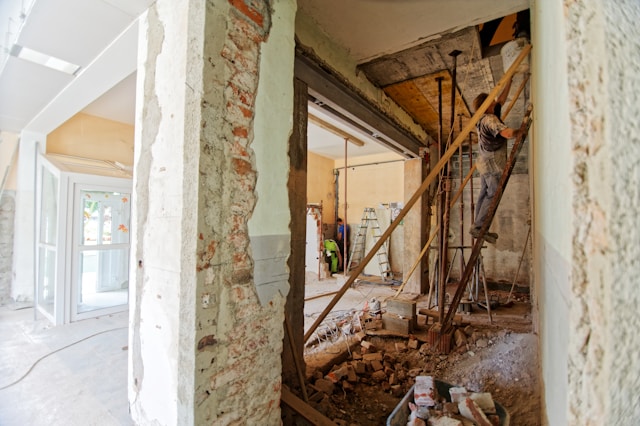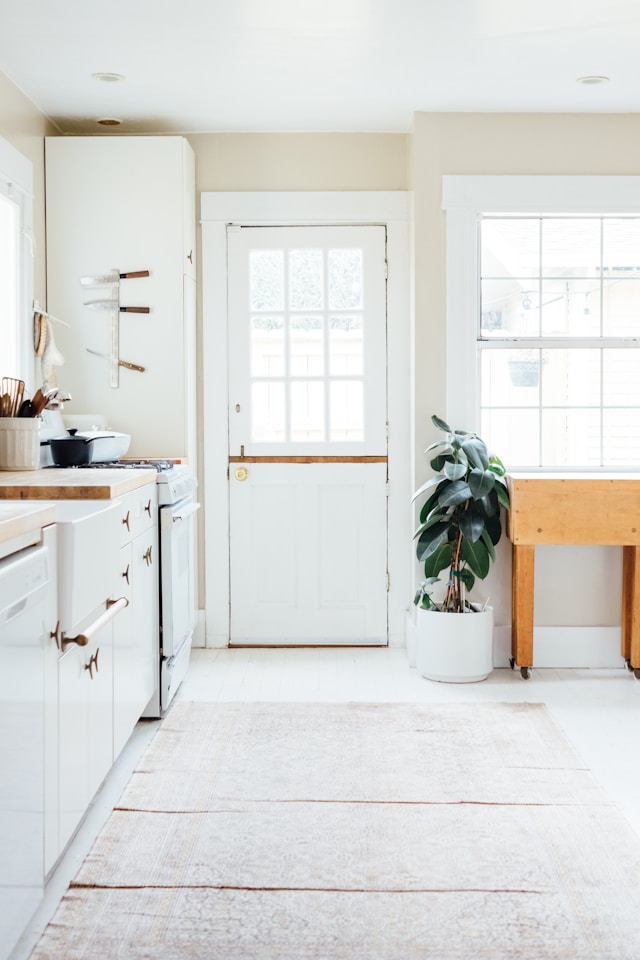Home renovation in the Netherlands
You just bought or are going to buy a house in the Netherlands. What do you need to think about regarding home renovation, in this topic we look at building regulations and permits, sustainability, contractor selection and much more.

We explore in this section
Permits (Vergunningen)
Depending on the scope and nature of the renovation work, you will need to obtain one or more permits from the local municipality (gemeente) before starting your home renovation.
Building Permit (omgevingsvergunning voor bouwen)
Required for structural alterations, additions or demolitions that affect the external appearance or load-bearing structure of a building. This includes major renovations, extensions and changes to the roofline.
Environmental Permit (Omgevingsvergunning voor milieu)
Necessary for activities that may have environmental implications, such as installing heating systems, air conditioning units, or solar panels.
Monument Permit (Monumentenvergunning)
If the property is a designated monument, additional permits may be needed for renovation work to ensure compliance with heritage preservation regulations.
Spatial Planning Permit (Omgevingsvergunning voor ruimtelijke ordening)
Required for projects that involve changes to land use, such as building a new structure or changing the function of existing buildings.
How to apply?
You normally need to submit an application to the local municipality (gemeente) for the relevant permits. The application process may involve providing detailed plans, drawings, specifications, and other documentation describing the proposed renovation work. Depending on the complexity of the project and local regulations, obtaining permits may take a while.
Compliance and Inspections
Once permits are granted, the renovation work must be carried out in accordance with the approved plans and building regulations. Local authorities may conduct inspections during various stages of the project to ensure compliance with safety and quality standards.
Failure to obtain necessary permits or comply with building regulations can result in fines and enforcement actions.
Permits and regulations can get very complex, it could be in your best interest to seek guidance from professionals, such as architects, contractors, or building consultants.
Building Regulations
The Building Decree (called Bouwbesluit in Dutch) is the legal framework for governing construction and renovation projects in the Netherlands. It sets out the minimum requirements for safety, health, usability, energy efficiency, and environmental protection in buildings. These regulations cover various aspects of construction, including structural integrity, fire safety, ventilation, insulation, accessibility and more.
Energy efficiency and sustainability
Energy efficiency and sustainability are significant considerations in the Netherlands. The Netherlands is motivated to reducing carbon emissions, promoting renewable energy use and creating more environmentally friendly buildings. You could think off:
Insulation of your home
Improving insulation of your home is essential. It will make your home require less heating in winter and cooling in summer, resulting in lower energy consumption and reduced electricity bills. Some examples: roof insulation, cavity wall insulation, floor insulation and double or triple glazing for windows.
Heating and Cooling Systems
Replacing your old heating systems with modern, energy-efficient alternatives is a priority in Dutch home renovations. This may involve installing high-efficiency condensing boilers, heat pumps or district heating systems.
Renewable Energy Generation
Many Dutch homeowners incorporate renewable energy generation technologies into their renovation projects to reduce reliance on fossil fuels and lower carbon footprints. Solar panels are particularly popular.
Dutch Government incentives and subsidies
The Dutch government offers various incentives and subsidies to encourage energy-efficient renovations and sustainable building practices. These incentives may include grants, tax incentives, or low-interest loans for energy-saving measures such as insulation upgrades, heating system replacements, and renewable energy installations. Accessing these financial incentives can help offset the upfront costs of energy-efficient renovations and accelerate the adoption of sustainable technologies.
Interior Design Trends
Interior design trends in the Netherlands has an emphasis on minimalism, functionality, and sustainability, along with influences from Dutch culture and global design movements. You can find suitable architects and interior decorators here.
Some examples of Dutch Interior design trends are:
Natural Materials
There's a preference for natural materials such as wood, stone, and natural fibers in Dutch interior design. These materials add warmth, texture, and a sense of authenticity to living spaces. Oak and beechwood are commonly used for furniture and flooring, while natural textiles like linen and wool are favored for upholstery and soft furnishings.
Indoor-Outdoor Living
The Dutch value connection to nature, interior design trends often resemble indoor-outdoor living. Large windows, sliding glass doors and outdoor living spaces such as balconies, terraces and gardens are integrated into home designs.
Bold Accents and Statement Pieces
While the Dutch interior design tends to be minimalist, there's also an appreciation for bold accents and statement pieces that add personality and visual interest to living spaces. Colorful artwork, statement lighting fixtures, and design furniture works wonders.
In a recent blog on our Guide you can read more.

Contractor Selection
You can start with asking for recommendations for a suitable contractor from friends, family or colleagues who have undergone similar projects. Sometimes looking for online reviews can also provide valuable insights.
Portfolio
Check the contractor's portfolio of past projects for style, quality of work, and suitability for your project.
Get Quotes
Request detailed quotes from several contractors for comparison. Ensure that each quote includes a breakdown of costs, timelines, materials and labor so you get the complete picture.
Communication and compatibility
If you struggle with speaking Dutch finding a English speaker is crucial. Communication is key to a successful renovation project. Choose a contractor with whom you can communicate effectively and who understands your vision for the project. Trust your instincts and consider how comfortable you feel working with each contractor.
Contract Agreement
Once you've selected a contractor, review and sign a detailed contract that outlines the scope of work, project timeline, payment schedule, warranties, and other terms and conditions. Clear communication and a comprehensive contract help prevent misunderstandings and disputes later on.
Practical: How to Rent a Waste container
A waste container or debris container, also known as a dumpster or a skip, is a large container used for collecting and transporting various types of waste and debris generated during construction or renovation. You can select various sizes, ranging from small bins suitable for residential use to large containers used on construction sites.
Afval.nl offers various sizes for construction and demolition Projects.
